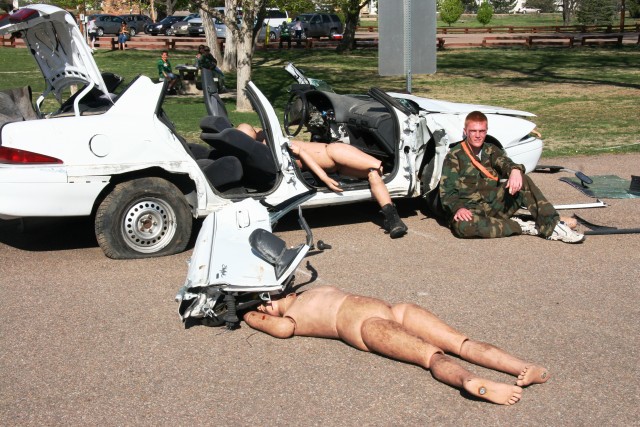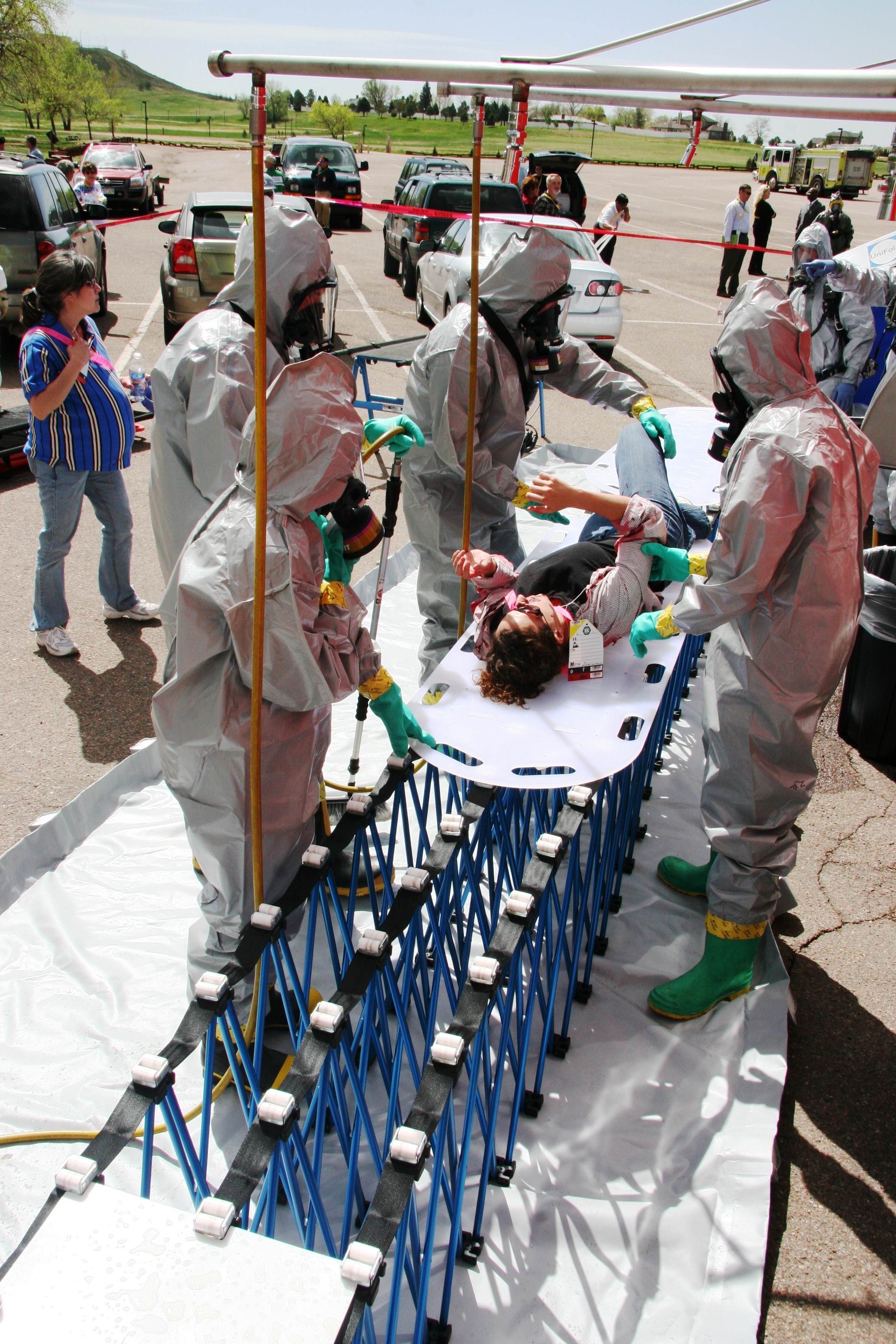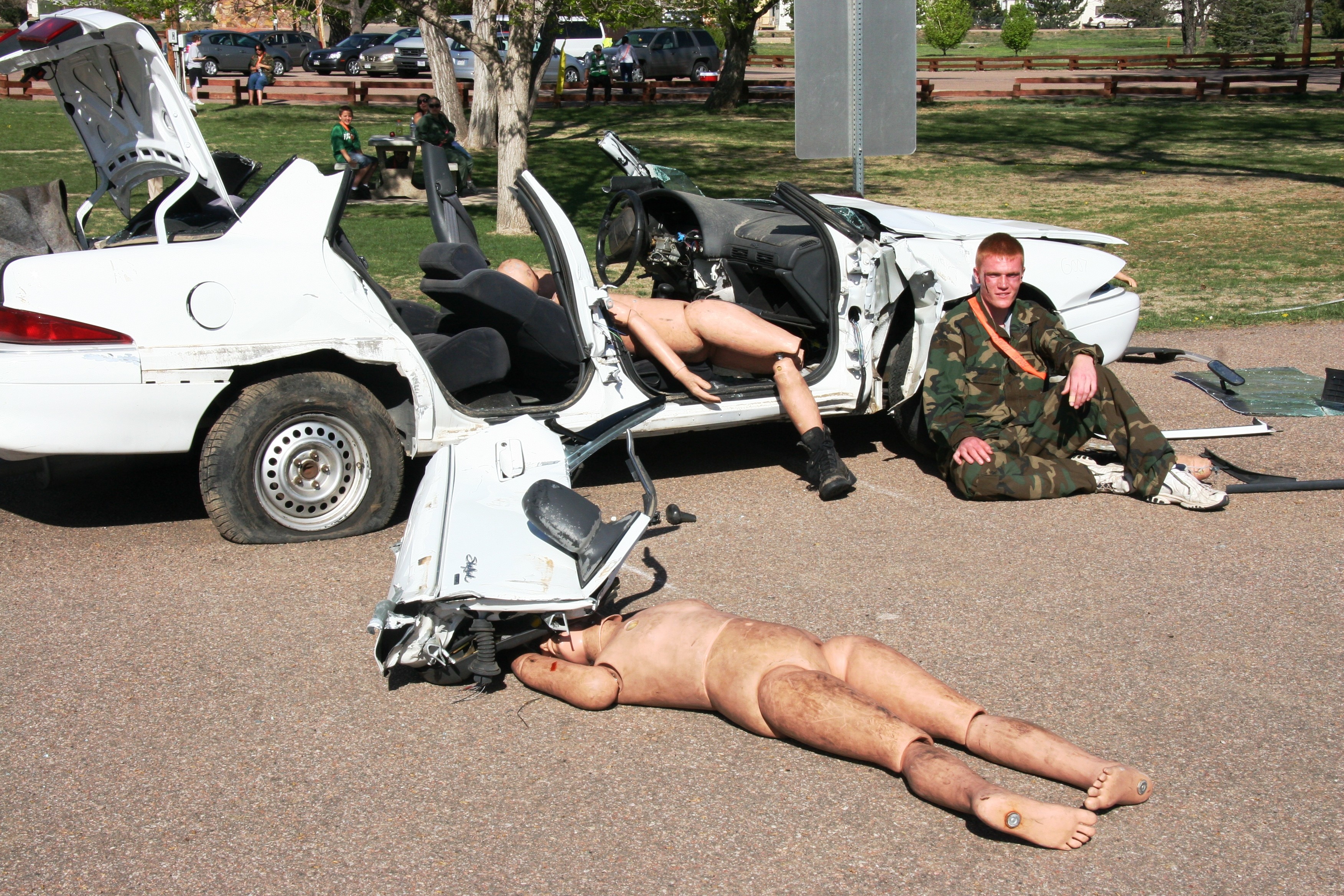FORT CARSON, Colo.-Emergency services personnel from Fort Carson and surrounding communities put themselves to the test during a coordinated training exercise May 12.
Mountain Warrior '09 was designed to test responder readiness and cooperation among participating agencies in reaction to a small scale, mock "terrorist attack" on Fort Carson.
"This is a full-scale exercise designed to test the emergency response abilities of the police and fire as well as the hospital assets," said Tony Sevey, chemical, biological, radiological, nuclear, and high yield explosive operations specialist with Fort Carson's Directorate of Plans, Training, Mobilization and Security. Sevey added that the program was directed by the Department of the Army which provided the emergency response equipment necessary for the exercise.
"We've gone through the training on the equipment," he said, "and this is the exercise portion. We'll do a full run of the equipment to test the training out."
The training, Sevey said, was based on responding to a terrorist attack on the installation. As Sevey explained, the training scenario events started with a terrorist who sped past gate guards, drove to Ironhorse Park, and detonated a "dirty bomb" - a 10-pound explosive device containing cesium 137 - which caused victims within the area of attack to become radioactively contaminated.
According to Sevey, the emergency response teams handled the situation well. He said emergency teams quickly determined the type and severity of the hazardous contamination, established crowd control, triaged victims and sent victims to Evans Army Community Hospital for further care and treatment.
"This is a good test to see if the training and the equipment that we fielded is viable and useful to the fire and police department," Sevey said. "Should we have a terrorist incident like this take place in the real world, (we're better) prepared to handle it. It's a good test to see if the equipment is being used properly to identify the agent and make sure that they're doing the proper decontamination. Chemical, biological or radiological - all have a different method of decontamination. We can learn from our mistakes here before we actually have to be faced with a real terrorist incident," he said.
"Everything's as realistic as we can get it," said Fire Captain Tom Joyce with Fort Carson's Fire and Emergency Service. "There are some things we're going to look at internally, obviously. I like to call it 'failing forward'. You're going to have your hiccups, you're going to have your hurdles and you're going to go over them."
Joyce said that the emergency responders would, during an after-action review, ask themselves what happened, what went well and suggest ways to improve the training process.
"We'll set up a timeline so we can develop another exercise to validate our training (so far)," Joyce said. "That's what this exercise is doing - validating the training we've had in the last six months. Then we'll take that and make an improvement plan for just training officers here in this community Each agency that's out here is going to have its own input as well."
According to Joyce, several of the surrounding communities participated in the exercise. Fire departments from the City of Fountain, Colorado Springs and North American Aerospace Defense Command (NORAD) sent mutual aid partners to participate in the exercise, he said.
Army National Guard Capt. Tony Schock, an observer with 8th Weapons of Mass Destruction-Civil Support Team based at Buckley Air Force Base in Aurora, approved of the training that he witnessed.
"They're for the most part following all of the principles needed for them not to spread contamination. They were able to identify the hazard right away, pull people back into a safe area and then try to work with them as quickly as they could," Schock said of the collective emergency response team.
"It's nice to see the collaboration of different entities participating seamless together," he added.




Social Sharing